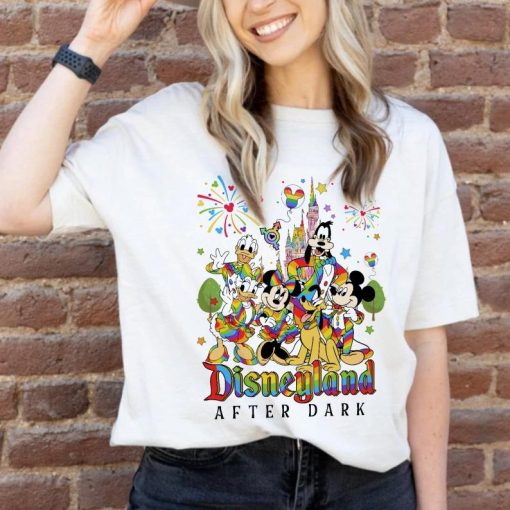Disney
Beauty and the Beast: The Fight for Belle

Linda Woolverton, the talented screenwriter behind Disney’s Beauty and the Beast, played a pivotal role in shaping the beloved character of Belle into a strong, independent heroine with a deep love for books. As the animated feature made its debut in 1991, it captivated audiences with its enchanting tale, whimsical characters, and groundbreaking portrayal of Belle as a smart and book-loving young woman.
Today, three decades later, Linda Woolverton finds herself in the foyer of Sydney’s Capitol Theatre, where the Broadway musical adaptation of Beauty and the Beast is set to open. Her passion for the character of Belle remains as strong as ever, and she speaks of her connection to the film and musical with unwavering enthusiasm. Woolverton’s involvement in the project has been enduring, constantly engaged in its evolution and remaining deeply invested in its success.
Beauty and the Beast marked a series of firsts in Linda Woolverton’s illustrious career. She became the first woman to write an animated feature for Disney, breaking barriers and paving the way for more diverse voices in the industry. The film itself broke new ground, becoming the first animated feature to be nominated for Best Picture at the Academy Awards. Furthermore, it went on to inspire the first Disney film adaptation as a Broadway musical, expanding the reach and impact of this timeless story.
Woolverton’s creative journey extended beyond Beauty and the Beast. She co-wrote another Disney classic, The Lion King, and penned the book for the highly acclaimed Broadway musical Aida, featuring music by Elton John and lyrics by Tim Rice. Additionally, she crafted the screenplay for Tim Burton’s visually stunning film Alice in Wonderland in 2010, and later contributed to the screenplay for the captivating fantasy film Maleficent, starring Angelina Jolie. Her talent and expertise have left an indelible mark on the world of storytelling.

Growing up in California, Linda Woolverton developed a passion for theater at a young age, performing in a local children’s theater company. After completing her Bachelor’s degree in Theatre Arts at California State University and pursuing a Master’s degree focused on theater for children, she established her own theater company specializing in improvisational work for young audiences. However, her deep-rooted connection to Disney and its magical films inspired her to explore the world of animation.
“Theatre was a wonderful place for me,” she reflects. “I loved movies too, but I never thought I would make movies. So, theater was my first love, no question. When the opportunity came about to turn Beauty into a musical after the movie came out, I jumped at it.”
At the start of her career, Woolverton authored two young adult novels and wrote scripts for various children’s animated television shows. While her agent initially discouraged her from approaching Disney, suggesting she was not yet ready, Woolverton’s determination led her to present her novel, Running Before the Wind, directly to the studio. Growing up in the shadow of Disneyland and being profoundly influenced by Disney movies, she felt a natural connection to the company’s storytelling tradition. She took a chance, walked into the animation building unguarded, and placed her book on the receptionist’s desk.

To her delight, only two days later, Disney reached out to her, expressing interest in her work. This initial opportunity led to Woolverton’s first assignment, writing a script about Winnie the Pooh, which the studio ultimately did not produce. However, she was then entrusted with the fairy tale of Beauty and the Beast and asked to envision her adaptation.
Recalling Jean Cocteau’s 1946 film adaptation of Beauty and the Beast, Woolverton was inspired by the magical elements of the story, particularly the animated objects and the human arms extending from the walls. She saw the potential to bring these enchanting elements to life through animation. In her initial draft, the animated objects remained mute and solely animated, without speaking roles. The script, at that point, had not yet been conceived as a musical.
However, the release of Disney’s The Little Mermaid, with its phenomenal success and memorable musical numbers composed by Alan Menken and Howard Ashman, influenced a significant change in the trajectory of Beauty and the Beast. Woolverton, along with the English directors attached to the project at the time, traveled to Florida to meet with Ashman and Menken.
During their meeting, Ashman posed a crucial question to Woolverton, saying, “I read your script, but who’s going to sing my songs?” Realizing the need for the characters to have voices, Woolverton agreed to transform the mute animated objects into speaking characters, infusing the story with the magic of music and lyrics.

Unbeknownst to Woolverton, Ashman was battling a terminal illness at the time, ultimately passing away due to complications from AIDS just a few months before Beauty and the Beast was released. Despite his illness, Ashman’s collaboration with Woolverton was fruitful, as they shared a creative synergy and aligned vision for the character of Belle.
Together, they championed the idea of Belle as an intelligent, independent young woman. However, convincing the studio to embrace this new perspective was no easy feat. In a departure from Disney’s traditional princess archetype, Woolverton and Ashman aimed to depict Belle as a relatable and multifaceted character, defying the passive, victimized roles often assigned to Disney heroines. Their intention was to create a strong female protagonist who would resonate with modern audiences.
Yet, the studio’s resistance to this portrayal posed a significant challenge. Within Disney’s story department, it was customary to rely on in-house talent rather than external screenwriters for their animated films. Linda Woolverton’s ambitious vision clashed with the established norms, but she found a supporter in Jeffrey Katzenberg, the Chair of Walt Disney Studios at the time, who recognized the potential in revitalizing the animation unit.
The journey to bring their vision to life was an arduous one. Woolverton faced resistance from colleagues who adhered to the traditional depiction of Disney heroines. As a self-proclaimed feminist, she vehemently argued that the world had evolved, and audiences no longer desired passive, victimized heroines. The battle to redefine the Disney heroine became a pivotal moment in Woolverton’s career, as she fought to ensure that Belle would be portrayed as a strong, independent woman.
:max_bytes(150000):strip_icc():focal(999x0:1001x2)/beauty-and-the-beast-879e99af252745f9800e64393dd87587.jpg)
One aspect that met resistance was the idea of Belle’s love for books. The studio initially viewed it as a passive and uninteresting characteristic, questioning the excitement of a character simply sitting and reading. Woolverton, drawing from her own experiences, proposed a compromise. She suggested that Belle could walk through town while reading, a reflection of her own childhood habit of reading while on the move.
Another scene that encountered resistance was one in which Belle marked her desired destinations on a world map using pins. However, the scene was modified in the storyboarding process, transforming Belle’s ambitious dreams into baking a cake. Woolverton, understanding the importance of capturing Belle’s adventurous spirit and thirst for exploration, refused to let this alteration go unchallenged. It became a pivotal moment in her battle to maintain Belle’s agency and aspirations within the story.
Looking back, Woolverton believes that Belle’s introduction heralded a shift in the portrayal of Disney heroines. While some subsequent heroines embraced warrior-like qualities, Belle remained a unique character who exemplified strength through her intelligence, compassion, and unwavering determination. She stood as a testament to the idea that strength does not require physical combat but can emerge from within, through intellect, kindness, and the pursuit of knowledge.
Beauty and the Beast opened to critical acclaim and widespread adoration in 1991. Linda Woolverton’s steadfast commitment to creating a progressive and empowering heroine paid off. The film went on to receive numerous accolades, including two Academy Awards, and solidified its place as a timeless Disney classic.
Since the success of Beauty and the Beast, Linda Woolverton has continued to contribute her talents to the world of storytelling. Her impressive body of work spans various genres and mediums, demonstrating her versatility as a writer. She has continued to champion strong female characters, such as the iconic Alice in Alice in Wonderland and the powerful Maleficent in the film of the same name.
Linda Woolverton’s contributions to the world of animation and theater have left an indelible mark. Her ability to craft compelling narratives and breathe life into complex characters has made her an influential figure in the industry. Through her work, she has challenged traditional storytelling norms and reshaped the perception of female protagonists, paving the way for more diverse and empowering representations in animated films.
As Linda Woolverton walks into the theater to witness the opening night of the Beauty and the Beast musical, she reflects on the remarkable journey that brought her here. Her passion for storytelling and her unwavering dedication to creating meaningful, relatable characters have left an enduring legacy. And as the curtain rises, Linda’s heart swells with pride, knowing that Belle’s timeless tale continues to inspire and captivate audiences around the world.
We bring out some of the most well-known Disney collection, all of which are available at reasonable costs. Visit our link now if you are interested in the Disney collection


Robin Hood, Maid Marian, Little John, Winnie the Pooh, Tigger
